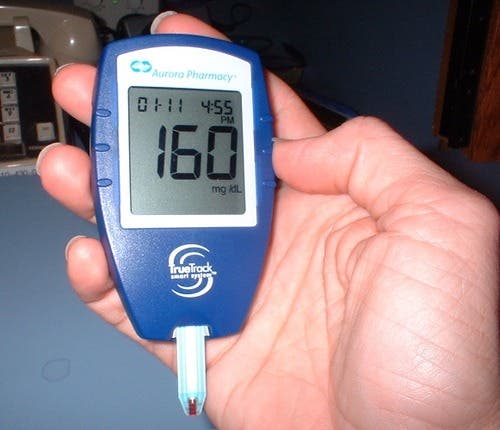Although there is a genetic predisposition to suffer from the metabolic syndrome, we can avoid it or delay its appearance if we follow a balanced diet, we maintain our ideal weight and we carry out physical activity frequently.
In our times it is increasingly common to suffer circulatory and coronary conditions, as well as suffering from diabetes mellitus. But did you know that the set of risk factors is considered a syndrome? In this article we will be talking about the diagnosis and treatment of metabolic syndrome.

What is metabolic syndrome?
The metabolic syndrome, also called syndrome X, syndrome or Reaven resistance syndrome insulin, is the group of risk factors that coincide in the same patient.
In this way, the person is at greater risk of developing cardiovascular diseases, coronary artery disease and diabetes.
The metabolic syndrome was described relatively recently, in 1988. And in fact, it was not until 1998 that the WHO defined it. Although its exact cause is unknown, these are some of the elements that can cause it to appear:
- Genetic factors
- Insulin resistance
- Obesity (especially in the central area of the body)
- Aging
- Sedentary
- Poor diet
- Low-grade chronic inflammation
In the past, this syndrome affected people aged 60 years and older, but currently, in Spain, 31% of those over 35 suffer from it
How is metabolic syndrome diagnosed?
According to the World Health Organization (WHO) a person will be diagnosed with metabolic syndrome if they meet 3 or more of the following criteria:
1- Blood pressure higher than 130/85 mm Hg or already being treated as hypertensive.
2- Fasting blood sugar levels from 100 to 125 mg / dl (5.6 to 7 mmol / L)
3- Dyslipidemia: triglycerides higher than 150 mg / dl and / or HDL cholesterol (“good” cholesterol) lower than 50 mg / dl in women and lower than 40 mg / dl in men, or taking drugs for dyslipidemia.
4- Central obesity or presence of fat in the abdominal region. To define this criterion, the waist circumference is used, which can be greater than 88 cm in women and 102 cm in men.
5-Low HDL cholesterol, 40 mg / dl (1 mmol / L) in men and 50 mg / dl (1.3mmol / L) in women.
If the diagnosis of metabolic syndrome is confirmed, it is important to start treatment immediately to avoid serious health complications.
Do you want to know what to do? Well here we will expose you the most common treatments although in reality these will be established by the specialist who attends you.
Metabolic syndrome treatment
A healthy life is the best treatment to control metabolic syndrome and its risks:
- Reduce at least 10% of excess weight in the following 6 to 12 months.
- Increase your physical activity. Between 30 and 60 minutes of moderate aerobic exercise, 4 or more days a week.
- Stop smoking.
- Eat a healthy diet: increase the consumption of fruits, vegetables, whole grains and lean proteins. In addition, it limits the consumption of sugar, salt, alcohol and fats.
In this way you can control your blood pressure, cholesterol and blood sugar. Likewise, each symptom should be treated individually, such as hypertension and dyslipidemia, with the pharmacological treatment indicated by the doctor.
Another recommendation is to reduce stress. Doing physical exercise can also help us at this point, although there are more options. It is important to control both our physical and emotional health.
Remember, metabolic syndrome is gaining prominence due to our unhealthy lifestyles. However, with a little effort we may be able to control it and, in turn, avoid its consequences.















